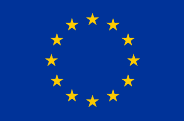
Safe non-food consumer Products in the EU and China
The term ‘risk management’ is used in many different contexts, and always encompasses the same process: identification of risk followed by actions to appropriately mitigate identified risks linked to a product. In terms of EU product safety requirements, any product must be safe under normal or reasonably foreseeable conditions of use including duration and that it does not present any risk or only the minimum risks compatible with the product’s use, considered to be acceptable and consistent with a high level of protection for the safety and health of persons. Products must be designed and manufactured so that they provide a high level of protection for the safety of EU consumers.
Sometimes products which are not compliant or present an unacceptable level of risk are unduly placed on the EU market. When this happens, risk management must be performed to undertake necessary corrective action to either make the product safe or remove it from the market or get it returned from consumers – this is usually referred to as corrective action but is the management of identified risk.
Product specific EU legislation as well as the General Product Safety Directive lay down the European health and safety requirements for products to be placed on the EU market. These requirements must be complied with by manufacturers and other players in the supply chain. For this, they have to assess the possible risks associated with the product they intend to place on the EU market and to implement remedies where necessary.
Risk management starts already at the phase of product design and production. This is coupled with the obligations of manufacturers to assemble the necessary technical documentation that enables them to demonstrate that this has taken place.
Risk management always requires the identification of possible hazards linked to a product and the assessment whether these hazards pose risks that need to be mitigated. It starts already at the phase of product design and production and is coupled with the obligations of manufacturers to assemble the necessary technical documentation, that enables them to demonstrate that their product is safe.
The risk management process in itself includes three distinct stages:
1. Safety by design. This is avoiding of risks at the design stage. For example, if a toy intended for children under 36 months had a small and easily detachable part that poses risk of choking, a change in the design is needed to eliminate that small part. Removal of the hazard is always the most effective way of managing risk, because if a hazard is not present then it cannot cause harm.
2. Mitigation of hazard (sometimes called control). This is when the source of the risk cannot be eliminated, but measures are put in place to reduce either the probability or the severity of the harm that can arise from it. An example is where a toy suitable for children under 36 months has small parts which are necessary for its functionality, but these are secured to the toy in such a way that they cannot be detached and placed in the mouth. This second stage is applicable where the source of the harm cannot be eliminated.
3. Remediation. If, in spite of the efforts taken in phase 1 or 2, a product placed on the market is found to be unsafe the third stage must be triggered to ensure risks are eliminated. Remedies must be proportionate to the risks to be eliminated and include a range of possible measures to be adopted by the economic operators or imposed by the market surveillance authorities. These measures are (non-exhaustive list):
Warnings should never be used where elimination or mitigation are practically possible. An example of this is a toy which has small and easily detachable parts which under no circumstances is suitable for children under three years, but they may be attracted to playing with it.
The risk management process is applied to product design through the use of essential health and safety requirements laid down in EU legislation. Design risk management requires consideration of all of the potential sources of harm that may be present in a product and then their management through the process outlined in the section above.
Once a safe product has been designed applying the principles of risk management, the manufacturer must turn their attention to the process of production. Proper conformity assessment requires that risk is also managed here, through controls in the production process by identification of critical points and putting in place procedures to eliminate hazards or mitigate risk. Such controls include consideration of the specification of component parts or raw materials, the production process itself and control of outputs with the objective of ensuring that every product manufactured is the same as the one subject to design risk management.
You may also visit the SPEAC ACADEMY to learn more about the EU Safety requirements.
The provided information was updated in 2022. Please note that some of the provided information could change during possible subsequent revisions of legislation, standards, and guidance documents. For any updates of official information on the EU product safety rules, please follow the Link to the webpage of the European Commission.
This document was produced with the financial support of the European Union. Its contents are the sole responsibility of SPEAC project and do not necessarily reflect the views of the European Union.

This website was created and maintained with the financial support of the European Union. Its contents are the sole responsibility of SPEAC project and do not necessarily reflect the views of the European Union.